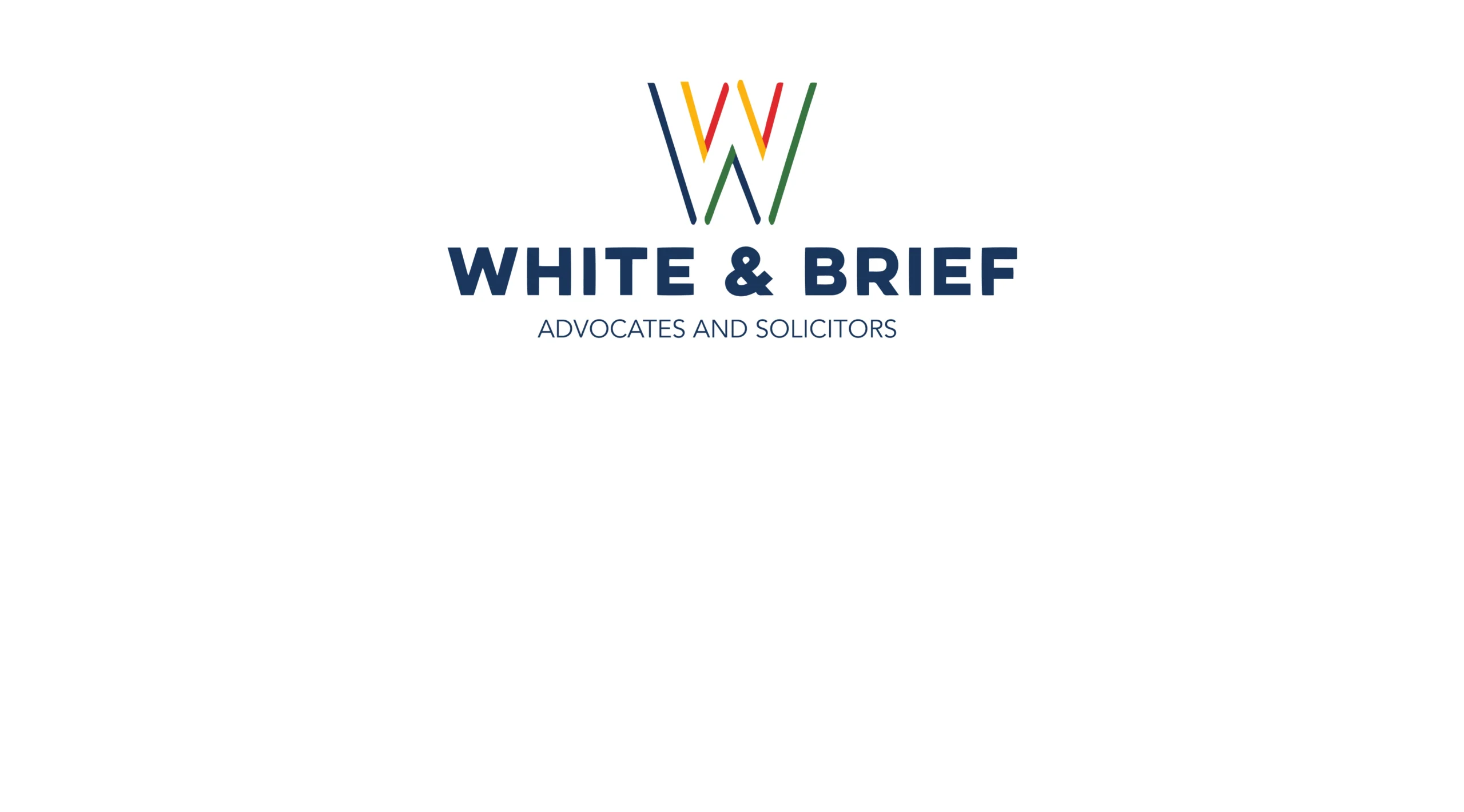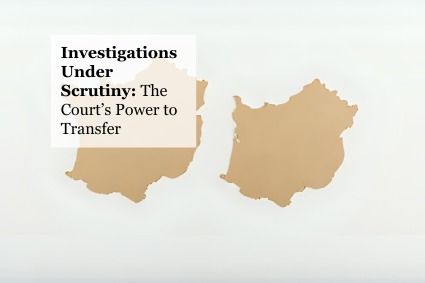W&B Website Blog Research – Legal Frameworks governing banks and financial institutions in India
Legal Frameworks governing banks and financial institutions in India
Core Acts:
- Reserve Bank of India Act, 1934
- Banking Regulation Act, 1949
Additional Statutes:
- Foreign Exchange Management Act (FEMA), 1999
- Prevention of Money Laundering Act (PMLA), 2002
- Securitisation and Reconstruction of Financial Assets and Enforcement of Security Interest Act (SARFAESI), 2002
- Insolvency and Bankruptcy Code (IBC), 2016
- Payment and Settlement Systems Act, 2007
- Deposit Insurance and Credit Guarantee Corporation Act, 1961
Additional Legislation:
- Negotiable Instruments Act, 1881
- Bankers’ Books Evidence Act, 1891
- Recovery of Debts Due to Banks and Financial Institutions Act, 1993
Landmark Judgements:
1. Dharani Sugars & Chemicals Ltd. v. Union of India (2019)
- Key Issue: Constitutional validity of Sections 35AA and 35AB of the Banking Regulation Act (1949) and the RBI’s February 12, 2018 Circular on stressed asset resolution.
- Supreme Court Judgment (March 6, 2019): Upheld the constitutionality of Sections 35AA and 35AB, empowering the RBI to initiate insolvency proceedings in cases of specific default. However, struck down the RBI Circular, ruling it ultra vires because it mandated a broad, sweeping directive (for all accounts over ₹2,000 crore) without specific central government authorization per case.
- Impact: Emphasized that regulatory bodies like the RBI must act strictly within the statutory mandate and guidelines.
2. CBI vs. Ramesh Gelli
- Key Issue: Whether officers of private banks qualify as ‘public servants’ under the Prevention of Corruption Act, 1988.
- Supreme Court Ruling: Private bank officials (chairman, MD, etc.) were held to be public servants by virtue of performing “public duty” per Section 46A of the Banking Regulation Act, 1949 and Section 2(c)(viii) of the PCA.
- Impact: Opened the door for anti-corruption charges against private bank executives in India.
3. Asset Reconstruction Co. (India) Ltd. v. Chief Controlling Revenue Authority (2022)
- Key Issue: Whether a power-of-attorney (PoA), tied to assignment deeds of debt under the SARFAESI Act, attracts stamp duty separately.
- Supreme Court Ruling: Held that an irrevocable PoA within an assignment deed is incidental and not a standalone instrument; thus, once a deed is charged appropriately under Article 20(a) as “conveyance”, it cannot be split for additional stamp duty.
- Impact: Prevented double taxation via stamp duty in asset reconstruction transactions.
4. Nedumpilli Finance Co. Ltd. v. State of Kerala (2022)
- Key Issue: Can NBFCs regulated by the RBI also be subject to overlapping State regulations like money-lending laws?
- Supreme Court Judgment: Held that the RBI Act, 1934, is a “complete code” for regulating NBFCs and that States cannot overlap or impose their own regulatory schemes where RBI already has authority.
- Impact: Clarified clear federal regulatory hierarchy, minimizing regulatory conflicts at the state level.
Key trends and reforms influencing the next phase of growth
1. Shift to Principle- and Outcome-Based Regulation
- The Reserve Bank of India is transitioning from rigid, rule-based oversight to more flexible, outcome-oriented regulation. This approach enables financial institutions to tailor operations while still meeting key performance benchmarks, promoting innovation and responsiveness.
2. Strengthening Risk Oversight in Derivatives Markets
- New draft guidelines from the RBI introduce stricter capital norms for Counterparty Credit Risk (CCR) in equity and commodity derivatives. This move aims to strengthen market resilience and systemic stability.
3. Reforming Digital and Data-Focused Frameworks
- Digital Banking Controls: Draft proposals under the ‘Digital Banking Channels Authorisation Directions, 2025’ aim to ban banks from promoting unapproved third-party products on digital platforms, emphasizing customer consent and risk assessment.
- Enhanced Access Modes: New norms propose offering users a choice between ‘view-only’ or full-transaction access to safeguard data and transactions.
- Digital Lending Oversight: The RBI’s 2025 Directions extend regulatory coverage over digital lending, including specific requirements for agreements with Lending Service Providers (LSPs), transparency in fees, and borrower redress mechanisms.
4. Banking Laws and Governance Overhaul
- As of August 1, 2025, the Banking Laws (Amendment) Act, 2025 came into force, ushering in critical reforms across the RBI Act, Banking Regulation Act, SBI Act, and related legislation:
- Substantial Interest threshold raised from ₹5 lakh to ₹2 crore.
- Tenures of cooperative bank directors extended for continuity and better governance.
- These changes are designed to align banking laws with constitutional best practices and global standards.
5. Expanding Digital Currency (Digital Rupee / e₹)
- The RBI’s Digital Rupee (CBDC) initiative is gaining traction:
- Pilot implementations have surpassed ₹1,015 crore in transactions.
- Focus areas include high-value B2B transfers, interbank settlements, cross-border use, and offline payment capabilities.
6. Broader Financial Restructuring & Foreign Investment
- Bank Ownership Rules Under Review: The RBI is considering liberalizing ownership caps to welcome more foreign investment in Indian banks. Previous constraints – 15% equity and 26% voting may be relaxed for strategic investors.
7. Systemic Legislative Reforms in Insurance, Lending & Insolvency
- Insurance Amendment Bill, 2025: Proposes raising FDI caps to 100%, conditional on premiums being invested within India, and allowing agents to sell products from multiple insurers. Capital norms may also be relaxed for niche players.
- Banning Unregulated Lending Activities (BULA) Bill: Aimed at curbing unauthorized lending practices, especially via digital platforms, by making unregistered lending illegal and penalizing deceptive marketing.
- IBC Amendment Bill, 2025: Introduces group insolvency and cross-border resolution aligned with UNCITRAL standards and supports creditor-led pre-pack resolution to expedite corporate recovery.
8. Cooperative and Urban Cooperative Banks (UCBs) Strengthening
- New Co-operative Policy (2025–2045): Focuses on expanding PACS networks and promoting inclusion through reforms like shared digital infrastructure, PCA for UCBs, and stricter supervision.
- PSL Norms Adjustments: Revision of Priority Sector Lending norms – 75% to 60% for Small Finance Banks, aligns them with UCBs and universal banks, improving flexibility.
9. ESG and Data Protection Integration
- ESG Reporting Mandates: SEBI will require the top 1,000 listed companies to publish BRSR Core disclosures by FY 2025–26, addressing climate and social governance risks.
- Digital Personal Data Protection Act, 2023: Imposes consent-driven data usage, rigorous obligations, and penalties, which is especially relevant for financial institutions handling sensitive customer data.
Overview of Direct and Indirect tax laws in India from a legal perspective
Direct Tax Laws in India
Income Tax Act, 1961
- The cornerstone of direct taxation in India governs the taxation of income earned by individuals, Hindu Undivided Families (HUFs), companies, firms, and other entities. The Act provides detailed provisions for computing taxable income under five heads: salaries, house property, profits and gains from business or profession, capital gains, and income from other sources. It establishes residential status criteria that determine tax liability scope, with residents being taxed on global income while non-residents face taxation only on India-sourced income.
- The Act incorporates extensive provisions for deductions under Chapter VI-A (sections 80C to 80U) and exemptions under sections 10-13A, allowing taxpayers to reduce their tax burden through various savings and investment instruments. It also contains detailed rules for tax deducted at source (TDS) and tax collected at source (TCS), creating a systematic collection mechanism.
Wealth Tax Act, 1957 (Abolished)
- Previously governed taxation of net wealth exceeding specified limits but was abolished in 2015, with the tax burden shifted to increased surcharge on high-income earners.
Key Legal Frameworks:
- Central Board of Direct Taxes (CBDT) formulates policy and administers direct taxes
- Income Tax Appellate Tribunal (ITAT) serves as the first appellate authority
- High Courts and Supreme Court handle further appeals on substantial questions of law
- Advance Ruling Authority provides binding determinations on complex tax issues
Indirect Tax Laws in India
Goods and Services Tax (GST) – 2017 Onwards
- GST represents India’s most significant tax reform, replacing multiple indirect taxes with a unified system. The legal framework comprises four main statutes:
- Central GST Act (CGST) – governs intra-state supplies
- State GST Acts (SGST) – mirror CGST provisions for state-level administration
- Integrated GST Act (IGST) – covers inter-state supplies and imports
- Union Territory GST Act (UTGST) – applies to union territories
GST operates on a dual structure where both center and states have concurrent taxation powers. The system features multiple tax rates (0%, 5%, 12%, 18%, 28%) with additional cess on luxury and sin goods. Input tax credit mechanism allows businesses to claim credit for taxes paid on inputs, creating a seamless flow of credits across the supply chain.
Pre-GST Indirect Tax Laws (Legacy Laws)
Though largely replaced, understanding these remains important for transitional issues and ongoing litigation:
- Central Excise Act, 1944 – taxed manufactured goods
- Customs Act, 1962 – continues to govern import/export duties alongside GST
- Service Tax – was levied under Finance Act, 1994
- State VAT Laws – governed intra-state trade
- Central Sales Tax Act, 1956 – covered inter-state sales
Constitutional Framework
The Constitution’s Seventh Schedule delineates taxation powers between the Union and States. The 101st Constitutional Amendment (2016) enabled GST implementation by creating concurrent taxation powers. Article 265 ensures no tax can be levied without legislative authority, while Article 14 mandates equal treatment in taxation matters.
Administrative and Procedural Aspects
- Both direct and indirect tax laws provide for self-assessment as the primary compliance mechanism, with provisions for scrutiny assessment, best judgment assessment, and protective assessment in specific circumstances.
Dispute Resolution:
- A structured appellate system exists with multiple tiers – assessing officer, first appellate authority, tribunal, High Court, and Supreme Court. Alternative dispute resolution mechanisms include Authority for Advance Rulings and settlement commissions (though the latter has been abolished for direct taxes).
Penalties and Prosecutions:
- Comprehensive penalty provisions exist for non-compliance, ranging from monetary penalties to prosecution for serious offenses. The legal framework emphasizes voluntary compliance while providing deterrent measures for tax evasion.
Recent Developments and Reforms
The tax landscape continues evolving with digitalization initiatives like e-assessment, faceless appeals, and real-time data matching. Anti-avoidance measures have been strengthened through General Anti-Avoidance Rules (GAAR) and specific anti-avoidance provisions. Base Erosion and Profit Shifting (BEPS) recommendations are being implemented to prevent tax avoidance by multinational enterprises.
Digitalization Initiatives:
E-Assessment Scheme
The e-assessment framework operates through a completely digital process via the Income Tax e-Filing portal, eliminating physical interface between taxpayers and assessing officers to ensure greater transparency, efficiency, and accountability. This system randomly allocates cases across different jurisdictions to prevent territorial bias and corruption.
Key features include:
- Random Allocation: Cases are distributed through computer algorithms to National e-Assessment Centers (NeACs)
- Jurisdictional Independence: Assessment officers in one city may handle cases from entirely different locations
- Digital Documentation: All communications occur through the e-filing portal with mandatory digital record maintenance
- Timeline Compliance: Automated workflow management ensures adherence to statutory timelines
Faceless Appeals Despite implementation challenges, the appeals system continues expanding, though pending appeals have increased from 458,015 in 2020-21 to an estimated 516,484 in 2023-24. The faceless appeal mechanism extends digital transformation to the appellate process.
Structure includes:
- Commissioner (Appeals) – Faceless: First appellate authority under faceless regime
- Random Assignment: Appeals allocated through computer systems to prevent influence
- Virtual Hearings: Conducted through video conferencing when required
- Digital Case Management: Complete case files maintained electronically
Real-Time Data Matching The Income Tax Department has implemented sophisticated data analytics for:
- Annual Information Returns (AIR): High-value transactions automatically reported
- Tax Deducted at Source (TDS) Matching: Real-time verification of TDS credits claimed
- Bank Account Monitoring: Integration with financial institutions for transaction monitoring
- Third-Party Data Integration: Cross-verification with registrar companies, stock exchanges, and mutual funds
- AI-Powered Risk Assessment: Machine learning algorithms identify potential tax evasion patterns
Anti-Avoidance Measures
General Anti-Avoidance Rules (GAAR) GAAR became effective from April 1, 2017, after nearly eight years of consultative development since its initial proposal in 2009, empowering tax officials to deny tax benefits when transactions lack commercial purpose beyond tax avoidance.
Legal Framework:
- Sections 95-102 of the Income Tax Act contain GAAR provisions
- Impermissible Avoidance Arrangement (IAA): Arrangements lacking commercial substance or creating tax benefits inconsistent with legislative intent
- Main Purpose Test: If obtaining tax benefit is the main purpose or one of the main purposes
- Grandfathering Provisions: Investments made before April 1, 2017, generally protected
Enforcement Mechanism:
- Approving Panel: Three-member panel including Chief Commissioner must approve GAAR invocation
- Burden of Proof: Initially on revenue department to establish arrangement as IAA
- Consequences: Tax benefits can be denied, transactions recharacterized, or deemed non-binding
Specific Anti-Avoidance Rules (SAAR) These complement GAAR by targeting specific schemes:
- Section 50CA: Deemed capital gains on transfer of capital assets for inadequate consideration
- Section 56(2)(x): Taxation of property received for inadequate consideration
- Section 68: Unexplained cash credits
- Section 269SS/269T: Restrictions on cash transactions above specified limits
BEPS Implementation
OECD Base Erosion and Profit Shifting Actions India has actively implemented several BEPS recommendations:
Action 2 – Hybrid Mismatch Rules:
- Section 94A: Denies deduction for payments to associated enterprises in jurisdictions where such payment is not taxable
Action 4 – Interest Limitation Rules:
- Section 94B: Limits interest deduction to 30% of EBITDA for excessive interest payments to associated enterprises
Action 5 – Harmful Tax Practices:
- Enhanced substance requirements for tax benefits
- Country-by-Country (CbC) reporting implementation
Action 6 – Treaty Abuse Prevention:
- Principal Purpose Test (PPT): Incorporated in newer tax treaties
- Limitation of Benefits (LOB): Stricter treaty access criteria
Action 13 – Transfer Pricing Documentation:
- Master File and Local File: Mandatory documentation for large enterprises
- Country-by-Country Reporting: Annual reporting for multinational groups with revenue exceeding INR 5,500 crores
Multilateral Instrument (MLI): India signed the MLI to implement treaty-related BEPS measures across its extensive Double Taxation Avoidance Agreement network.
Implementation Challenges and Legal Implications
Digitalization Challenges:
- Technical glitches in portal systems affecting compliance timelines
- Digital divide issues for smaller taxpayers and rural practitioners
- Data security and privacy concerns in digital processing
- Training requirements for tax professionals adapting to new systems
GAAR Application Complexities:
- Subjective determination of “commercial substance”
- Interaction between GAAR and Specific Anti-Avoidance Rules
- Impact on genuine business restructuring transactions
- Uncertainty in application leading to increased litigation
BEPS Compliance Burden:
- Increased documentation and reporting requirements
- Higher compliance costs for multinational enterprises
- Coordination challenges between different jurisdictions’ BEPS implementations
- Potential for double taxation in transition periods
Landmark Judgements
Direct Tax:
- Keshav Mills Co. Ltd. v. CIT (1953, SC)
Clarified the scope of reassessment proceedings and when income can be reassessed.
- CIT v. B.C. Srinivasa Setty (1981, SC)
Held that if computation provisions fail, the charging section also fails. Specifically, transfer of self-generated goodwill is not taxable as capital gains.
- McDowell & Co. Ltd. v. CTO (1985, SC)
Landmark on tax avoidance vs. tax evasion. Court held that colourable devices cannot be part of tax planning. Introduced the doctrine against tax avoidance.
- Union of India v. Azadi Bachao Andolan (2003, SC)
Limited the scope of McDowell. Held that legitimate tax planning is permissible. Recognised the validity of Mauritius DTAA benefits.
- Vodafone International Holdings v. Union of India (2012, SC)
Major ruling on indirect transfer of shares. SC ruled in Vodafone’s favour that offshore transfers are not taxable in India. (Led to retrospective amendment in IT Act, 2012).
- CIT v. Sun Engineering Works (1992, SC)
Reassessment scope clarified; assessee cannot seek relief on issues not connected with escaped income.
- CIT v. Eli Lilly & Co. (2009, SC)
Clarified employer’s liability to deduct TDS on salaries paid abroad to expatriate employees working in India.
- Southern Technologies Ltd. v. JCIT (2010, SC)
Held that RBI guidelines for NBFC provisioning cannot override Income-tax provisions.
- CIT v. Smifs Securities Ltd. (2012, SC)
Recognised goodwill as an intangible asset eligible for depreciation under Income-tax Act.
- Engineering Analysis Centre of Excellence v. CIT (2021, SC)
Held that payments for software (end-user license) are not “royalty” and not taxable in India under DTAA. Major relief to IT companies.
Indirect Tax:
Pre-GST Era
- Kesoram Industries v. CWT (1966, SC)
Defined “tax” vs. “fee”, foundational for indirect taxation structure.
- McDowell & Co. Ltd. v. CTO (1985, SC)
Apart from direct tax, it influenced excise & sales tax avoidance structures.
- Union of India v. Bombay Tyre International (1984, SC)
Clarified the scope of “assessable value” under excise duty – expenses post-manufacture not includible.
- Collector of Central Excise v. Indian Aluminium Co. (1995, SC)
Laid down test for determining whether goods are excisable: goods must be movable, marketable, and distinct.
- All India Federation of Tax Practitioners v. UOI (2007, SC)
Validated service tax as a levy under the Union’s residuary powers.
- BSNL v. Union of India (2006, SC)
Important on sales tax vs. service tax. Clarified taxation of composite contracts (telecom services).
- Vikrant Tyres Ltd. v. First ITO (2001, SC)
Clarified excise liability in case of retrospective price revision.
GST Era (Post–2017)
- Mohit Minerals Pvt. Ltd. v. Union of India (2022, SC)
Landmark ruling on GST compensation cess and IGST on ocean freight. SC held that double taxation not permissible. Also affirmed GST Council’s recommendations are not binding on Centre and States, preserving fiscal federalism.
- Union of India v. VKC Footsteps India Pvt. Ltd. (2021, SC)
Clarified refund of unutilised ITC under GST. Court upheld the government’s restriction on refund of input services (only goods eligible).
- Canon India Pvt. Ltd. v. Commissioner of Customs (2021, SC)
Held that DRI officers are not proper officers to issue customs duty demand notices. Significant blow to revenue authorities.
- Ecom Gill Coffee Trading Pvt. Ltd. v. Union of India (2023, SC)
Clarified classification disputes in GST, upholding need for certainty in levy.
- Shekhar Resorts Ltd. v. UOI (2024, SC)
Affirmed that GST levy on hospitality sector is constitutionally valid.
By entering the email address you agree to our Privacy Policy.



